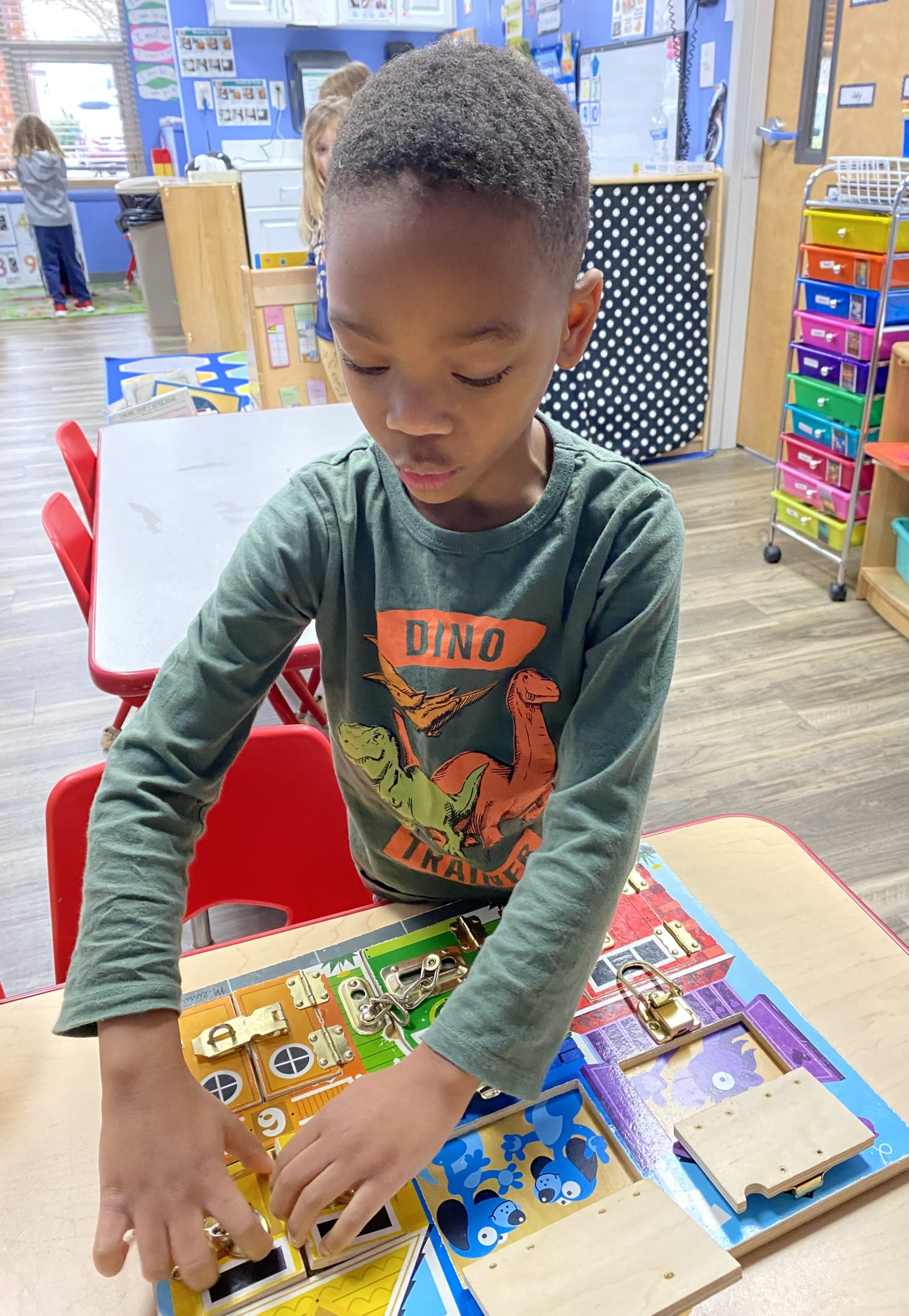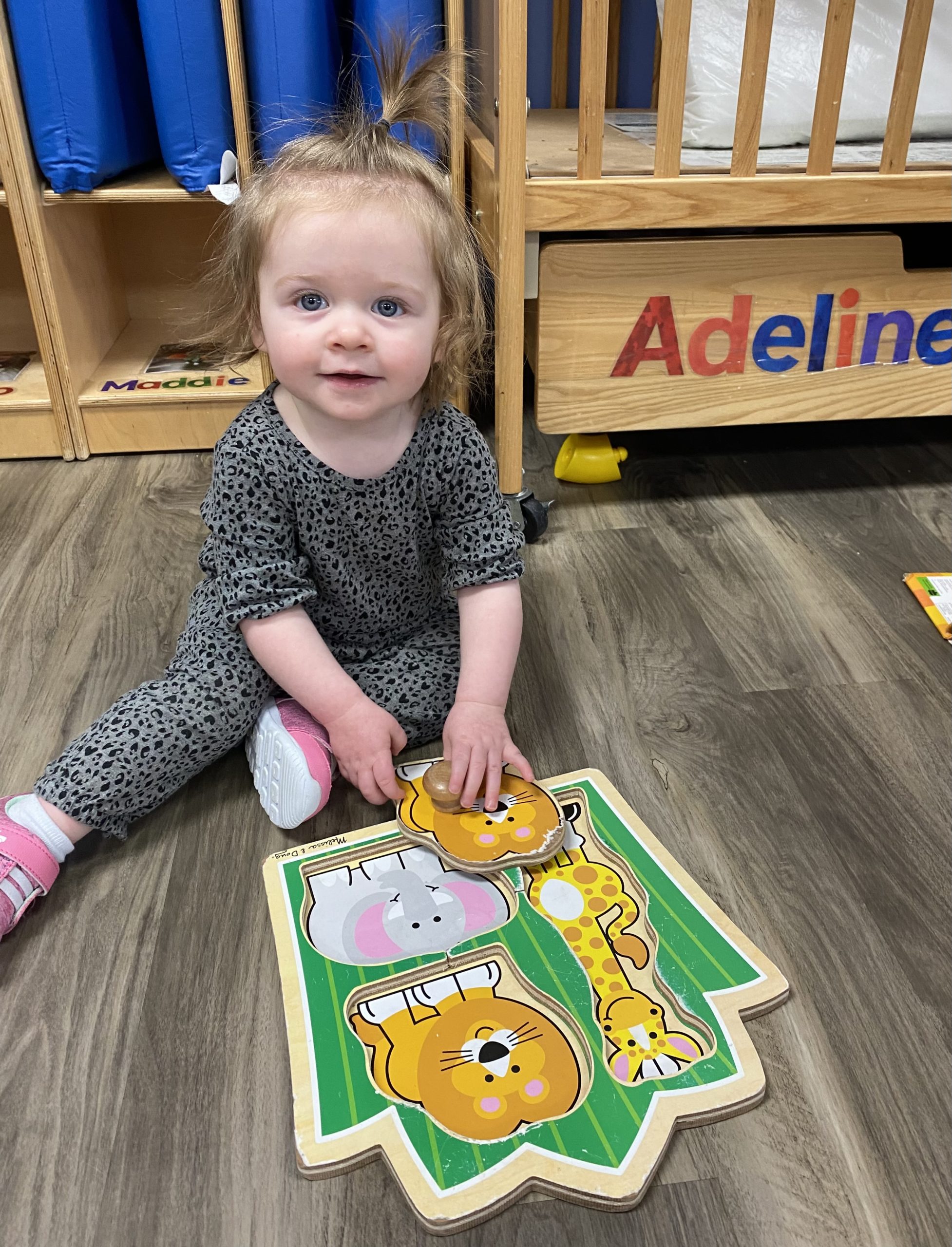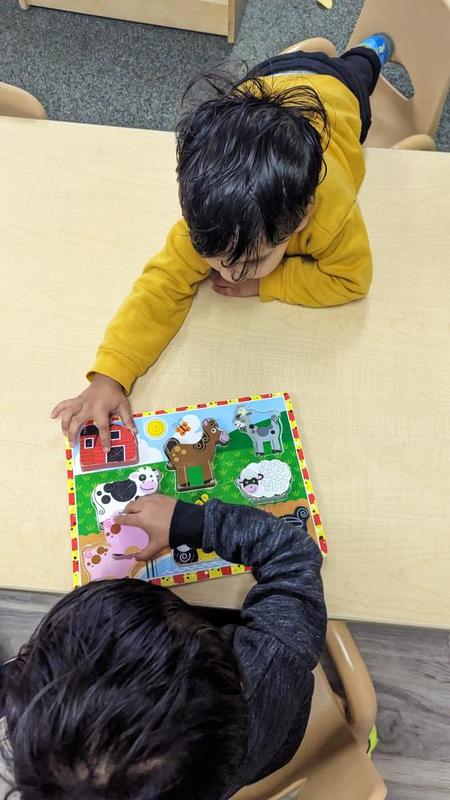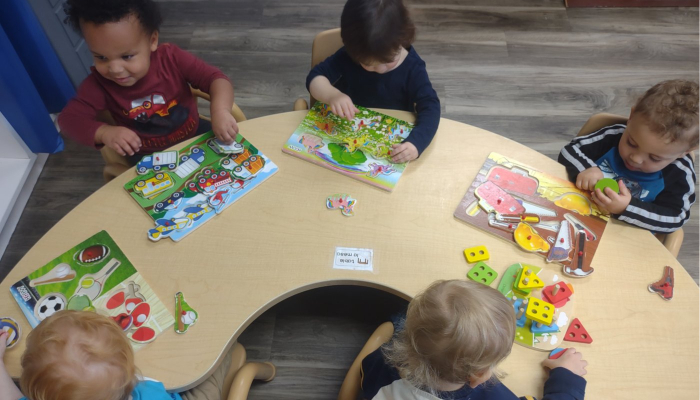By Lauren Hayworth, COO, A Child’s World Learning Centers
Parents and educators alike can have the privilege of seeing joy on a child’s face as he or she happily completes a puzzle. For infants, a shape sorter is a classic early learning tool that introduces them to shapes, colors, and spatial awareness. There is a satisfying “clink!” as they navigate various openings until finding the one through which a particular shape will fit. Toddlers begin to use large-knobbed puzzle pieces to explore themes such as farm life, under the sea, wild animals, parts of the body, everyday living, numbers, and more. When every piece has found its correct space on the board, there are cheers all around. Next, preschool-aged children move to increasingly involved puzzles, with more and smaller pieces, or even large floor-sized versions. They learn about outer space, trains, construction equipment, and occupations while continuing to develop their hand-eye coordination and cognitive abilities. Finally, older children and even adults can find relaxation and a sense of accomplishment in the successful completion of a word search, crossword, or table-top puzzle. They truly are an activity for all ages.

For young children in particular, puzzles of different types may seem like play but are critical to development. Tanja Mcilroy of Empowered Parents lists the following benefits of doing jigsaw puzzles in early childhood:
Development of:
- Fine motor skills
- Gross motor skills
- Visual perception, including memory, comprehension, and analysis
- Hand-eye coordination
Learning about:
- Early mathematical concepts
- Problem-solving
- Spatial relations
and
Improving one’s:
- Attention span
- Ability to play independently
- Confidence
- Perseverance
It is no wonder that you are likely to find puzzles in every child’s home and every age classroom throughout a preschool. They are a daily “toy” that has many benefits!
National Puzzle Day is Sunday, January 29th. Studies have found that working on a jigsaw puzzle engages both sides of the brain, and can improve memory, cognitive function, and problem-solving skills. Other types of puzzles increase vocabulary, language skills, and number skills. All of them can have a positive impact on social interactions, as individuals work together in person to accomplish a puzzle task or engage in friendly online competition.

How will you celebrate National Puzzle Day?
Make a photo puzzle! Take photographs of people or objects, print, and cut them into random pieces. Children will love putting together “puzzles” of their favorite familiar objects!
Go on a puzzle hunt! Take pieces from a single puzzle and hide them throughout the room. Children will have to work together to find all of the pieces, and then can complete the puzzle successfully.
Make puzzle rubbings! Place puzzle pieces under a sheet of paper and use a crayon, flat-side down, to rub the puzzle shape.
Make a puzzle picture frame! This is a great way to use up old pieces of a puzzle which is no longer complete. Make a picture frame out of large popsicle sticks and glue random puzzle pieces around the frame. Fill with the child’s favorite photo or make as a gift for parents.

Autism Awareness
You may have also seen puzzle pieces in current culture used to represent autism awareness. The history of this image dates back to 1963, when Gerald Gasson, a parent and board member of the National Autistic Society in London, first designed it. Over time the original design has evolved, but the puzzle theme remains, symbolizing the various characteristics a person on the autism spectrum can display, and the fact that it remains a puzzling condition that can be hard to treat. The colors have brightened over time as awareness and acceptance of autism have increased, and the puzzle pieces remind us to see the big picture… many individuals have special needs or challenges they may face, but we are all people working together in the long run. Visit autismspeaks.org for more information!
Learn more about A Child’s World Learning Centers by visiting their website. Follow their local center’s Facebook pages here:
Resources:
- nationaldaycalendar.com/national-puzzle-day-january-29/
- empoweredparents.co/benefits-of-puzzles/
- theearlychildhoodacademy.com/january-29-national-puzzle-day/
- sarahdooleycenter.org/news/autism-puzzle-piece-design/
Sponsored by A Child’s World Learning Centers.














